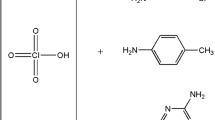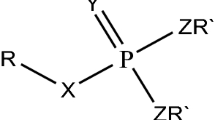Abstract
Hydrogen bonds are the presiding concepts for arranging the three-dimensional forms of biological molecules like proteins, carbohydrates, and nucleic acids, and act as guides for proton transfer reactions. Gas-phase acidity and pKa calculations in dimethyl sulfoxide on a line of polyhydroxylated piperidines specify that multiple hydrogen bonds lead to enhance acidities. The gas-phase acidity (GPA) of polyhydroxylated piperidines was investigated by MP2/6-311++G(d,p)//B3LYP/6-311++G(d,p) method. For each structure, varied primary and secondary hydroxyl groups were deprotonated. The natural bond orbital (NBO) and quantum theory of atoms in molecules (QTAIM) analyses have also been used to realize the character of the hydrogen bonding interactions in these compounds. The results show by adding each hydroxyl group, ΔHacid in the gas phase becomes less endothermic and pKa value in the solution phase will decrease. Therefore, intramolecular hydrogen bonds lead to enhance the acid strength. In both the gas and solution phases, the β-nojirimycin-OH2 (β-1-OH2) was found to be the most acidic compound with calculated GPA of 349.4 kcal·mol-1 and the pKa value of 22.0 (8.0 pKa units more acidic than 1-propanol). It was also shown, by applying the polarized continuum model (PCM), there is a superior linear correlation with the GPAs of polyhydroxylated piperidines and their calculated pKa (DMSO) values.






Similar content being viewed by others
Availability of data and material
The datasets used and/or analyzed during the current study are available from the corresponding author on reasonable request.
References
Afarinkia K, Bahar A (2005) Recent advances in the chemistry of azapyranose sugars. Tetrahedron Asymmetry 16:1239–1287
Zamoner LOB, Aragão-Leoneti V, Carvalho I (2019) Iminosugars: Effects of Stereochemistry. Ring Size, and N-Substituents on Glucosidase Activities, Pharmaceuticals 12:108
Jensen JL, Tsuang SC, Uslan AH (1986) Mechanism of acid-catalyzed anomerization of methyl D-glucopyranosides. J Org Chem 51:816–819
Liu PU (1987) Total synthesis of 2,6-dideoxy-2,6-imino-7-O-(.beta.-D-glucopyranosyl)-D-glycero-L-gulo-heptitol hydrochloride. A potent inhibitor of .alpha.-glucosidases. J Org Chem 52:4717–4721
Cogoli A, Semenza G (1975) A probable oxocarbonium ion in the reaction mechanism of small intestinal sucrase and isomaltase. J Biol Chem 250:7802–7809
Sinnott ML (1990) Catalytic mechanism of enzymic glycosyl transfer. Chem Rev 90:1171–1202
Johnson CR, Golebiowski A, Sundram H, Miller MW, Dwaihy RL (1995) Synthesis of (+)-1-deoxygalactonojirimycin and a related indolizidine. Tetrahedron Lett 36:653–654
Suzuki K, Hashimoto H (1994) Synthesis of azapyranosyl thioglycoside: Novel pseudo-disaccharide having an azasugar residue at the non-reducing end. Tetrahedron Lett 35:4119–4122
Pandey G, Bharadwaj KC, Khan MI, Shashidhara K, Puranik VG (2008) Synthesis of polyhydroxy piperidines and their analogues: a novel approach towards selective inhibitors of α-glucosidase. Org Biomol Chem 6:2587–2595
Inouye S, Tsuruoka T, Ito T, Niida T (1968) Structure and synthesis of nojirimycin. Tetrahedron 24:2125–2144
Inouye S, Tsuruoka T, Nida T (1966) The structure of nojirimycin, a piperidinose sugar antibiotic. J Antibiot 19:288–292
Junge B, Matzke M, Stltefuss J (1996) Handbook of Experimental Pharmacology, Kuhlmann, J
Wang H, Shen Y, Zhao L, Ye Y (2021) 1-Deoxynojirimycin and its derivatives: A mini review of the literature. Curr Med Chem 28:628–643
Pandey G, Kapur M, Khan MI, Gaikwad SM (2003) A new access to polyhydroxy piperidines of the azasugar class: synthesis and glycosidase inhibition studies. Org Biomol Chem 1:3321–3326
Miyake Y, Ebata M (1988a) Isolation and properties of a new β-galactosidase inhibitor, galactostatin, from Streptomyces lydicus. Agric Biolog Chem 52:153–158
Miyake Y, Ebata M (1988b) Inhibition of β-galactosidase by galactostatin, galactostatin-lactam, and 1-deoxygalactostatin. Agric Biol Chem 52:1649–1654
Legler G, Pohl S (1986) Synthesis of 5-amino-5-deoxy-D-galactopyranose and 1, 5-dideoxy-1, 5-imino-D-galactitol, and their inhibition of α-and β-D-galactosidases. Carbohydrate research 155:119–129
Asano N, Ishii S, Kizu H, Ikeda K, Yasuda K, Kato A, Martin OR, Fan JQ (2000) In vitro inhibition and intracellular enhancement of lysosomal α-galactosidase A activity in Fabry lymphoblasts by 1-deoxygalactonojirimycin and its derivatives. Eur J Biochem 267:4179–4186
Legler G, Stütz AE, Immich H (1995) Synthesis of 1, 5-dideoxy-1, 5-imino-D-arabinitol (5-nor-L-fuco-1-deoxynojirimycin) and its application for the affinity purification and characterisation of α-L-fucosidase. Carbohydr Res 272:17–30
Le Merrer Y, Poitout L, Depezay J-C, Dosbaa I, Geoffroy S, Foglietti M-J (1997) Synthesis of azasugars as potent inhibitors of glycosidases. Bioorg Med Chem 5:519–533
Nazır H, Yıldız M, Yılmaz H, Tahir M, Ülkü D (2000) Intramolecular hydrogen bonding and tautomerism in Schiff bases. Structure of N-(2-pyridil)-2-oxo-1-naphthylidenemethylamine. J Mol Struct 524:241–250.
Čuma M, Scheiner S, Kar T (1998) Competition between rotamerization and proton transfer in o-hydroxybenzaldehyde. J Am Chem Soc 120:10497–10503
Filarowski A, Głowiaka T, Koll A (1999) Strengthening of the intramolecular O⋯ H⋯ N hydrogen bonds in Schiff bases as a result of steric repulsion. J Mol Struct 484:75–89
Raissi H, Moshfeghi E, Jalbout AF, Saeid Hosseini M, Fazli M (2007) An approach to estimate the energy and strength of the intramolecular hydrogen bond in different conformers of 4‐methylamino‐3‐penten‐2‐one. Int J Quantum Chem 107:1835–1845
Fores M, Scheiner S (1999) Effects of chemical substitution upon excited state proton transfer. Fluoroderivatives of salicylaldimine. Chem Phys 246:65–74
Chen C, Shyu SF, Hsu FS (1999) Theoretical study of salicylaldehyde conformal isomers and their intramolecular oxygen and hydrogen relations. Int J Quantum Chem 74:395–404
Barone V, Palma A, Sanna N (2003) Toward a reliable computational support to the spectroscopic characterization of excited state intramolecular proton transfer:[2, 2′-bipyridine]-3, 3′-diol as a test case. Chem Phys Lett 381:451–457
Jalbout AF, Contreras-Torres F, Castillo RD (2008) Solvation of excess electrons trapped in charge pockets on hydrated molecular surfaces. Int J Quantum Chem 108:567–575
Chung G, Kwon O, Kwon Y (1998) Theoretical study on salicylaldehyde and 2-mercaptobenzaldehyde: intramolecular hydrogen bonding. J Phys Chem A 102:2381–2387
Linstrom PJ, Mallard WG (2001) The NIST Chemistry WebBook: A chemical data resource on the internet. J Chem Eng Data 46:1059–1063
Ervin KM, DeTuri VF (2002) Anchoring the gas-phase acidity scale. J Phys Chem A 106:9947–9956
Ellison G, Engelking P, Lineberger W (1982) Photoelectron spectroscopy of alkoxide and enolate negative ions. J Phys Chem 86:4873–4878
Pérez P, Toro-Labbé A, Contreras R (2000) Global and local analysis of the gas-phase acidity of haloacetic acids. J Phys Chem A 104:5882–5887
Pérez P, Simon-Manso Y, Aizman A, Fuentealba P, Contreras R (2000) Empirical energy− density relationships for the analysis of substituent effects in chemical reactivity. J Am Chem Soc 122:4756–4762
Dai H, Kong J, Zhou C, Franklin N, Tombler T, Cassell A, Fan S, Chapline M (1999) Controlled chemical routes to nanotube architectures, physics, and devices, ACS Publications
Rablen PR (2000) Is the acetate anion stabilized by resonance or electrostatics? A systematic structural comparison, J Am Chem Soc 122:357–368
Brauman JI, Blair LK (1970) Gas-phase acidities of alcohols. J Am Chem Soc 92:5986–5992
Tian Z, Fattahi A, Lis L, Kass SR (2009) Single-centered hydrogen-bonded enhanced acidity (SHEA) acids: a new class of brønsted acids. J Am Chem Soc 131:16984–16988
Hassanpour A, Ebrahimiasl S, Youseftabar-Miri L, Ebadi A, Ahmadi S, Eslami M (2021a) A DFT study on the electronic detection of mercaptopurine drug by boron carbide nanosheets. Comput Theor Chem 1198:113166
Hassanpour A, Youseftabar-Miri L, Nezhad PDK, Ahmadi S, Ebrahimiasl S (2021b) Kinetic stability and NBO analysis of the C20-nAln nanocages (n= 1–5) using DFT investigation. J Mol Struct 1233:130079
Nezhad PDK, Youseftabar-Miri L, Ahmadi S, Ebrahimiasl S, Vessally E (2021) A DFT quest for effects of fused rings on the stability of remote N-heterocyclic carbenes. Struct Chem 32:787–798
Spartan V (1996) 06V102, Wavefunction, Inc., Irvine, CA, USA
Frisch MJ, Trucks GW, Schlegel HB, Scuseria GE, Robb MA, Cheeseman JR, Scalmani G, Barone V, Mennucci B, Petersson GA et al (2009) GAUSSIAN 09; Revision A02; Gaussian, Inc., Wallingford, CT
Beck AD (1993) Density-functional thermochemistry. III. The role of exact exchange. J Chem Phys 98:5648–5646
Lee C, Yang W, Parr RG (1988) Development of the Colle-Salvetti correlation-energy formula into a functional of the electron density. Phys Rev B 37:785
Xing D, Tan X, Chen X, Bu Y (2008) Theoretical Study on the Gas-Phase Acidity of Multiple Sites of Cu+− Adenine and Cu2+− Adenine Complexes. J Phys Chem A 112:7418–7425
Ding F, Smith JM, Wang H (2009) First-principles calculation of p K a values for organic acids in nonaqueous solution. J Org Chem 74:2679–2691
Reed AE, Weinhold F (1985) Natural localized molecular orbitals. J Chem Phys 83:1736–1740
Reed AE, Weinhold F (1983) Natural bond orbital analysis of near-Hartree–Fock water dimer. J Chem Phys 78:4066–4073
Reed AE, Weinstock RB, Weinhold F (1985) Natural population analysis. J Chem Phys 83:735–746
Foster AJ, Weinhold F (1980) Natural hybrid orbitals. J Am Chem Soc 102: 7211–7218
Chocholoušová J, Špirko V, Hobza P (2004) First local minimum of the formic acid dimer exhibits simultaneously red-shifted O-H⋯ O and improper blue-shifted C–H⋯ O hydrogen bonds. Phys Chem Chem Phys 6:37–41
Bader R (1990) Atoms in Molecules: A Quantum Theory Oxford University Press Oxford, nº UK
Popelier PLA, Aicken F, O’Brien S (2000) Atoms in molecules, Prentice Hall Manchester
Becke A (2007) The quantum theory of atoms in molecules: from solid state to DNA and drug design. John Wiley & Sons
Koch U, Popelier PL (1995) Characterization of CHO hydrogen bonds on the basis of the charge density. J Phys Chem 99:9747–9754
Bader RF (1998) A bond path: a universal indicator of bonded interactions. J Phys Chem A 102:7314–7323
Bader R, Biegler-König F, Schönbohm J (2002) AIM2000 program package, Ver. 2.0, McMaster University, Hamilton
Cramer CJ, Truhlar DG (1993) Quantum chemical conformational analysis of glucose in aqueous solution. J Am Chem Soc 115:5745–5753
Mulroney B, Barrie Peel J, Traeger JC (1999) Relative gas‐phase acidities of glucopyranose from molecular orbital calculations. J Mass Spectrom 34:544-553
Majumdar TK, Clairet F, Tabet JC, Cooks RG (1992) Epimer distinction and structural effects on gas-phase acidities of alcohols measured using the kinetic method. J Am Chem Soc 114:2897–2903
Edward J (1955) Stability of glycosides to acid hydrolysis. Chem Ind 3:1102–1104
Albert A, Serjeant E (1984) The Determination of Ionization Constants: A Laboratory Manual. Chapman and Hall, London and New York
Stewart R (2012) The proton: applications to organic chemistry, Elsevier
Acknowledgments
Support from Tehran Medical Sciences, Islamic Azad University, is gratefully acknowledged.
Author information
Authors and Affiliations
Corresponding author
Ethics declarations
Ethics approval
N/A
Consent to participate
N/A
Consent for publication
N/A
Conflict of interest
The author declares no competing interests.
Additional information
Publisher's Note
Springer Nature remains neutral with regard to jurisdictional claims in published maps and institutional affiliations.
Supplementary information
Below is the link to the electronic supplementary material.
Rights and permissions
About this article
Cite this article
Javan, M.J. Influence of multiple and cooperative hydrogen bonding on the acidity of polyhydroxylated piperidines: electron density topological analysis. Struct Chem 33, 101–111 (2022). https://doi.org/10.1007/s11224-021-01821-y
Received:
Accepted:
Published:
Issue Date:
DOI: https://doi.org/10.1007/s11224-021-01821-y




